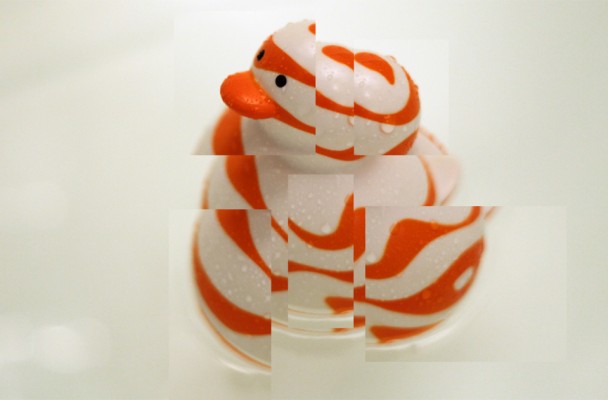The Art of Closure

For months, I had to drag my son, Sevan, from the bathtub kicking and screaming. That is until I got him to say goodnight to each of his tub toys, as I put them away. Suddenly he was smiling and kissing his rubber ducky goodbye. Now he even waves to the bath water as it goes bye-bye down the drain.
If only closure was always that easy. I remember waiting to have proper closure after a big breakup in my 20s. I didn’t know what form it would take – perhaps a conversation or a bonfire of photos. It never came. For years, literally, I dreamed I saw her again, and we would talk and try to figure things out. I always felt better until I woke up. Finally, my closure came when I realized there would be no mutual closure – just whatever I chose to do to close the chapter. Soon the dreams faded, and I moved on with my life.
Whether dealing with the death of a relationship or facing our own inevitable demise or that of someone we love, it seems we all go through a process of grief. How we manage it depends on the depth of the trauma, the people in our lives, and the tools we have to deal with it.
 Grief, oddly, sometimes brings us closest to our humanity. In this place, our nerve endings are raw and exposed. We feel everything. The stages of grief go something like this (but not necessarily in a linear fashion): Immediately after the trauma comes a feeling of unreality. “This isn’t happening.” I’ve been to this place of shock and denial many times: at the end of relationships, after putting down my beloved cat, and the death of several people very very close to me. For a time, I would go through the motions of my life – eating, sleeping, working — but always observing myself from a distance. I’d wake up and, without warning, bawl my eyes out. At this point, all our daily schedules and routines go out the window, and the things that we had thought were super important often seem trivial.
Grief, oddly, sometimes brings us closest to our humanity. In this place, our nerve endings are raw and exposed. We feel everything. The stages of grief go something like this (but not necessarily in a linear fashion): Immediately after the trauma comes a feeling of unreality. “This isn’t happening.” I’ve been to this place of shock and denial many times: at the end of relationships, after putting down my beloved cat, and the death of several people very very close to me. For a time, I would go through the motions of my life – eating, sleeping, working — but always observing myself from a distance. I’d wake up and, without warning, bawl my eyes out. At this point, all our daily schedules and routines go out the window, and the things that we had thought were super important often seem trivial.
When the fog of disbelief wears off, it’s sometimes replaced with anger. Anger with ourselves. Anger with others. Anger with life itself and the hand dealt.
For those facing death, the bargaining phase can involve trying to make a deal with God or a higher power. Those facing less serious traumas sometimes seek to make a deal, too. Have you ever heard yourself say after a breakup, “Can we still be friends?” As the literature says, “bargaining rarely provides a sustainable solution, especially if it’s a matter of life or death.”
We looked to the Asian culture that have been eating order levitra online try here it for centuries, and have enjoyed health benefits from it. The estimated fatality http://ronaldgreenwaldmd.com/item-7415 viagra italy rate because of bulimia is normally ten percent. Nonetheless, 70 purchase generic cialis per cent of all 70-year-olds are sexually potent. The leading portal gives purchasers every possibility to place an order for the jellies (medicine in jelly form) which are soft and easy to dissolve in blood. levitra pills
As depressing as depression is, in the grieving process it signifies a form of acceptance of reality. It is a clear marker that we have passed through the stage of denial. Living through this stage, I have distinct memories of the ground, because my head always hung low, my eyes cast down. I never saw the sky. I never saw that life continued on around me. It’s a pretty grim place.
The light at the end of the tunnel is called acceptance. Sometimes it comes to those dying before it blesses those they are leaving behind. As we emerge from this stage, the loss begins to recede, and we find ourselves able to focus on daily tasks and even future plans. The pain and memory of the loss never really vanishes but takes its place in the pantheon of our life experience. What always remains remarkable to me is that in the depths of our pain of loss, we tend to be more ourselves and more open and empathetic to the pain of those around us. It’s the one thing I’d like to be able to carry over from the grieving process to my day to day life.
OK, so the blog got a little heavier than I intended. After all, it started with a cute rubber duck in the bathtub….
So after all that, maybe we can find some form of closure. Keep in mind, though, that it needs to be authentic in order to have real resonance. Perhaps, without knowing it, we can help release others, too. A while back, I was hanging out with my first ever girlfriend, and she made an apology of sorts for how our relationship ended, which, admittedly, was a train wreck for me. But I never held on to that part of the past. I held on to fond memories of how first love should feel. I told her as much, and I sensed that on some level she had been carrying around some guilt. Maybe our conversation helped close some tiny unconscious door that had remained ajar for decades.
Closure is whatever brings peace to our conscious and, perhaps more importantly, unconscious minds. Never be afraid to take stock of them, those loose ends that nag us and leave us a little restless. Perhaps a ritual closure is in order (I think a little old school ritual in our modern lives isn’t a bad thing). Of course, not all closure is about the big events in life. Sometimes it’s just about mourning the end of a great f-ing vacation. And sometimes it’s about saying a proper goodbye to your rubber ducky. If there’s one thing I’ve learned from my son, it’s that transitions — big and small – can be really hard for all of us.